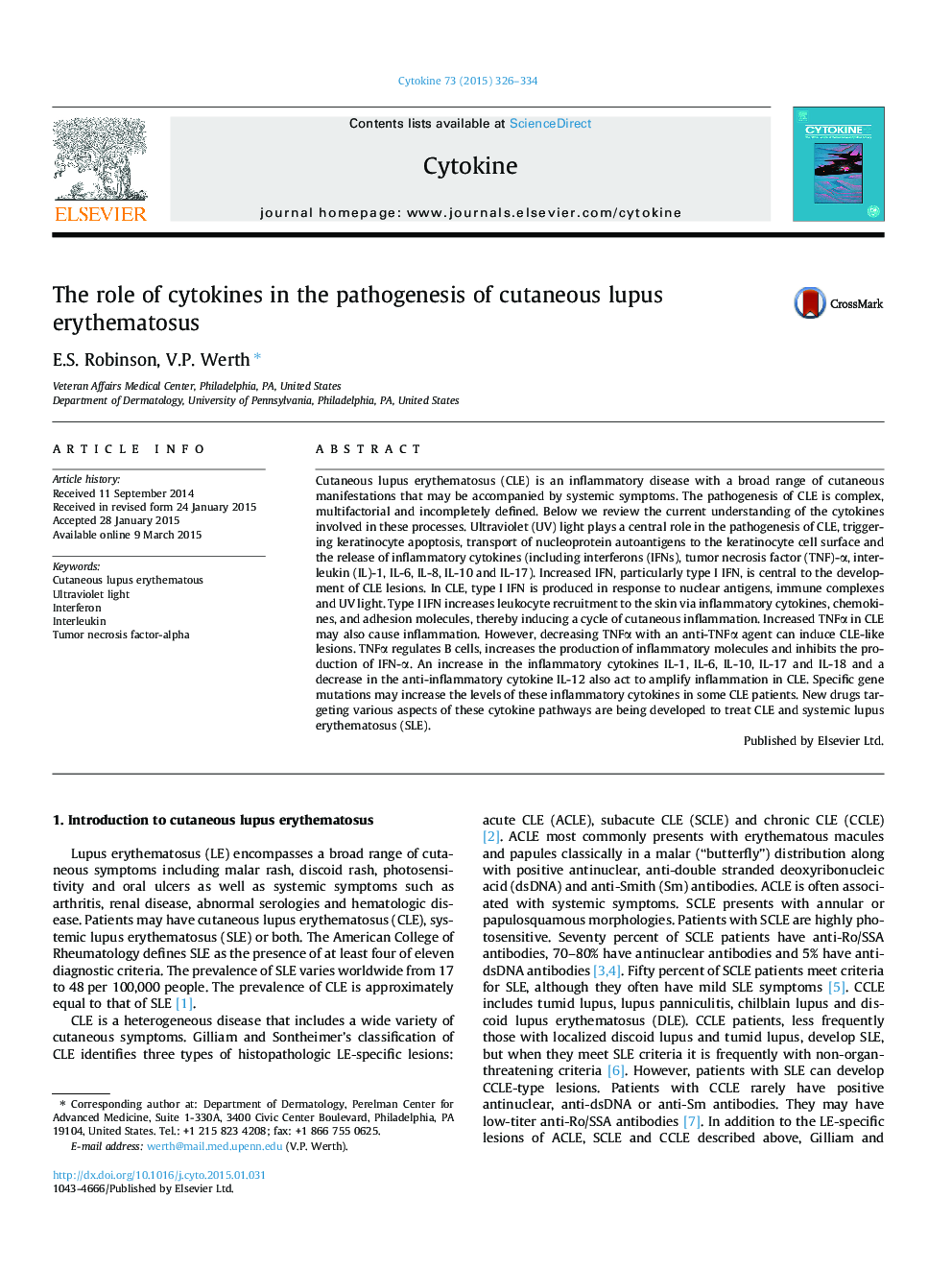| کد مقاله | کد نشریه | سال انتشار | مقاله انگلیسی | نسخه تمام متن |
|---|---|---|---|---|
| 5897019 | 1155250 | 2015 | 9 صفحه PDF | دانلود رایگان |
- The pathogenesis of cutaneous lupus erythematosus (CLE) is multifactorial.
- Cytokines are increased in the skin in CLE and are important in CLE's pathogenesis.
- Ultraviolet (UV) light directly increases inflammatory cytokine production in CLE.
Cutaneous lupus erythematosus (CLE) is an inflammatory disease with a broad range of cutaneous manifestations that may be accompanied by systemic symptoms. The pathogenesis of CLE is complex, multifactorial and incompletely defined. Below we review the current understanding of the cytokines involved in these processes. Ultraviolet (UV) light plays a central role in the pathogenesis of CLE, triggering keratinocyte apoptosis, transport of nucleoprotein autoantigens to the keratinocyte cell surface and the release of inflammatory cytokines (including interferons (IFNs), tumor necrosis factor (TNF)-α, interleukin (IL)-1, IL-6, IL-8, IL-10 and IL-17). Increased IFN, particularly type I IFN, is central to the development of CLE lesions. In CLE, type I IFN is produced in response to nuclear antigens, immune complexes and UV light. Type I IFN increases leukocyte recruitment to the skin via inflammatory cytokines, chemokines, and adhesion molecules, thereby inducing a cycle of cutaneous inflammation. Increased TNFα in CLE may also cause inflammation. However, decreasing TNFα with an anti-TNFα agent can induce CLE-like lesions. TNFα regulates B cells, increases the production of inflammatory molecules and inhibits the production of IFN-α. An increase in the inflammatory cytokines IL-1, IL-6, IL-10, IL-17 and IL-18 and a decrease in the anti-inflammatory cytokine IL-12 also act to amplify inflammation in CLE. Specific gene mutations may increase the levels of these inflammatory cytokines in some CLE patients. New drugs targeting various aspects of these cytokine pathways are being developed to treat CLE and systemic lupus erythematosus (SLE).
Journal: Cytokine - Volume 73, Issue 2, June 2015, Pages 326-334
